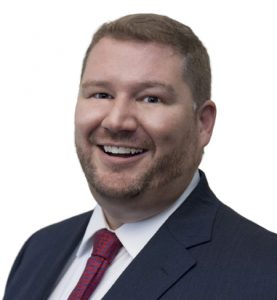LESSONS FROM THE FAMILY OFFICE
Looking for benchmarks that can help your agency or brokerage serve clients better? Look to the affluent for advice
By Lori Widmer
In many ways, wealthy families are much like a commercial business. Everything from cyber liability and claims to global supply chain and catastrophic events falls under the risks that well-to-do individuals must mitigate in order to protect their assets for the next generations. For that reason, the family office—a firm that handles investment, wealth and related management duties for a wealthy family—can serve as a benchmark for agents and brokers looking to improve their client relations.
The list of risks seems familiar: Property storm damage, employment practices liabilities, even risks from serving on nonprofit boards pose challenges to the high-net-worth individuals. Those same challenges are of universal concern, and how families handle the exposures can serve as a lesson for others—including businesses.
Jason Ott, president of Aon Private Risk Management, says the relevance to commercial insurance clients is clear. “The family office is ultimately a business. They manage the affairs of their family, their financial well-being, their travel and safety, and their property. Those are the same things our commercial risk advisors are trying to do—cover the business, the properties that are associated with it, the people. There are a lot of similarities.”
The Family Office Benchmarking Report, conducted by Aon, revealed that affluent families are indeed facing evolving risks, heightened loss exposures, and privacy and physical security issues with similar frequency and severity to organizations. While there were some risks that organizations don’t necessarily face (such as risk to art and collections), many of the challenges echoed those that corporations everywhere are tasked with mitigating.
Shared risks, shared goals
That’s because many organizations share the same goals as the affluent: to protect investments and hard-earned assets. Fortunately, the solutions that family offices employ can be used by nearly any organization.
Cyber. According to the FBI’s Inter-net Crime Report 2020, the department’s Internet Crime Complaint Center (IC3)received 791,790 complaints of suspected internet crime in 2020, an increase of over 300,000 complaints from 2019. Those losses exceeded a staggering $4.2 billion. Typically, corporate entities and small businesses bear the brunt of the attacks. However, the rise in the number of family offices being targeted is alarming. A UBS study revealed that 22% of family offices in North America had knowingly experienced a cyberattack.
Like their affluent counterparts, organizations of all sizes should be taking cybersecurity much more seriously. Yet in many cases, says Ott, educating clients has become the real challenge. “I worry that it’s going to take a major cyber event” for clients to realize the need for coverage, he says.

“Meaningful conversations …
demonstrate that the commercial
broker is taking a holistic look at the risks that are
facing the company, and not just the company, but the
people, who are the most valuable asset.”
—Jason Ott
President
Aon Private Risk Management
Ott says his practice advises clients to construct robust cyber programs that address a comprehensive list of cyber risks. Other measures companies should be taking: a written cyber plan that takes into account the impact of cyberattacks on the business. That plan should include policies and procedures on how to identify, prevent, report, and respond to cyberattacks. A cyber risk assessment can help clients identify their most serious threats, whether they’re a commercial insured or not.
Steps like educating clients on the various external resources available to them can help them put together their own policies. Agents and brokers can point clients to resources such as the National Institute of Standards and Technology (NIST), International Organization for Standardization (ISO), and Federal Financial Institutions Examination Council (FFIEC), which all publish cyber risk management standards.
EPLI/Management and Professional Liability. For high-net-worth individuals, employment practices liability (EPL) is essential for anyone employed by the family, such as domes-tic workers. As with any organization, protection for workers compensation is required, and EPL is critical to protecting the bottom line. Any person who has access to private or proprietary information should be vetted thoroughly before being hired.
Affluent individuals conduct background checks and implement expectations and requirements for their domestic employees. To combat any wrongful termination, family offices use EPL policies to cover defense costs and damages from employee-generated lawsuits.
Asset management firms that manage the assets for family offices should be advised to consider a management and professional liability product, the Aon report suggests. The coverage protects against claims of mismanagement. So too can organizations protect themselves against claims of neglect, mismanagement, or alleged wrongful acts.
“One thing that we can do as a brokerage community is recommend background checks,” says Ott. “Some-times the carriers will actually offer complimentary background checks on domestic staff, depending on the size of the client and the coverage. Sometimes they’ll have a specific number of back-ground checks they provide per year.”
That background check, he says, should contemplate the people around the new hire. “Sometimes it’s not actually the individual, but it’s someone associated in their life, or they may have some financial burden that clients aren’t aware of.”
D&O/E&O. Families with family offices, particularly those who serve on boards or engage with the community, protect themselves from liability through directors and officers (D&O) policies and errors and omissions (E&O) coverage. Because nearly 4% of nonprofits face D&O-related claims each year, according to the Aon report, board members need to be covered.
With settlements increasing by 71% in one year and the average total for legal fees and settlements reaching $4.5 million, according to Milliman research, it’s a warning shot worthy of close attention. Any organization that has a board of directors needs to ensure that their board members are covered for liability.
To avoid E&O claims, Aon recommends understanding the importance of transparency. Agents and brokers can advise clients to review their dis-closure practices, interactions with new and existing clients, client education, documentation, and complaint resolution measures.
Catastrophic weather events. Earthquake, wildfire, hurricane, drought—businesses and other individuals face the same devastating loss potential as do the affluent. Since many of these events are linked to specific geographies, says Ott, knowing how others in a region are handling a risk can help agents and brokers sell their clients on the protection. Pointing to data in an earthquake-prone area, he says, helps clients see how their peers are responding to the same threat.
Helping clients make informed decisions, says Ott, should be the goal for agents and brokers. Making smart, informed decisions through that kind of localized data can help organizations put the right products and protections in place to mitigate against the most critical risks to their families and their businesses.
How the rich stay safe
As with any client—personal or commercial—family office business requires regular review. A regular review of operations can, for example, reveal additions to a business, new or outdated equipment, policies that need to be updated, expansion plans, and changes of any size—all of which can impact coverage needs.
Ott recommends keeping an open dialogue with clients so that emerging exposures can be identified and addressed quickly. Plus, agents and brokers should be updating clients on the latest developments and recommending better options as they appear.
Addressing changes for personal lines clients is important. Having similar conversations with a commercial risk management team, Ott says, can help agents and brokers highlight the risk transfer options available to clients. “Meaningful conversations about risk management and risk transfer, and ultimately looking at and evaluating personal risk exposures, demonstrate that the commercial broker is taking a holistic look at the risks that are facing the company,” says Ott, “and not just the company, but the people, who are the most valuable asset.”
For more information:
Aon Private Risk Management
www.aon.com
The author
Lori Widmer is a Philadelphia-based writer and editor who specializes in insurance and risk management.






